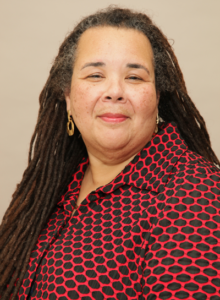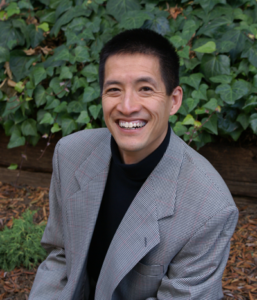faculty well-being
Select an item by clicking its checkbox

Mindful Teaching and Learning: Developing a Pedagogy of Well-Being
Date Reviewed: November 30, -0001
Mindful Teaching and Learning challenges educators to be attentive to their own self-knowledge and location in the classroom. Emphasizing a transdisciplinary approach, the authors articulate the value and effectiveness of mindfulness-based practices and the possible benefits for pedagogy and curriculum. The editor contends, “The content of this book examines ways in which to develop habits of mind, courses of action, as well as a curriculum of study that would support educators as they cultivate competencies for thriving and coping with the modern demands of being a teacher” (viii).
The first three chapters draw on evidence-based research to argue for the value and effectiveness of mindfulness-based practices. Elizabeth R. Mackenzie assesses previous research across disciplines in order to craft a compelling foundation for the need for and benefits of mindfulness training for students and educators. Karen Ragoonaden draws on Eastern contemplative practices, indigenous wisdom, and mindfulness to demonstrate the positive impact of mindful practices on one’s personal and professional life. Through her self-study, Ragoonaden reveals the impact of mindfulness on educators and students. Kathryn Byrnes and Tom Bassarear provide pedagogical techniques to demonstrate the effectiveness of contemplative pedagogy. They discuss techniques that arise from their own contemplative practices and urge readers to similarly engage practices to be meaningfully incorporated into class sessions.
The second portion of the book considers the implementation of mindfulness-based practices in leadership, curriculum, and field experiences. Sabre Cherkowski, Kelly Hanson, and Jennifer Kelly consider leadership as informed by mindfulness. Drawing on their own experiences in educational research, in leadership in a school district, and in the classroom, the authors articulate mindful leadership as being rooted in knowledge of oneself, assisting others to live and work better, and being nurtured in relationship with colleagues. Geoffrey Soloway draws on his qualitative research on mindfulness-based wellness education programs to offer insight into curriculum design and implementation. Significantly, he offers suggestions for how to assist students in drawing connections between mindfulness and their own lives. Margaret Macintyre Latta examines field experience for prospective teachers as an opportunity to attend to the relation between theory and practice in curriculum and to implement mindfulness in the classroom.
Overall, the authors contribute to wider discussions in pedagogy as they question the goals of education and emphasize a holistic approach to the individual and learning in contrast to a dominant emphasis on content. Mindful Teaching and Learning challenges faculty to focus on the learning evident in the present moment. The chapters draw on a wide range of research and methodologies (self-studies and qualitative research). In particular the use of self-studies by several of the authors and reflections by educators on their own use of mindfulness encourage the reader to reflect on his or her own practices and the possible impact of mindfulness on an individual’s personal and professional life, pedagogy, and students.
It is a challenge to do what you teach. “If you know these things happy are ye if you do them.” (John 13:17, King James Version – or the version of my childhood bible study) - my grandfather’s favorite verse. I know, in order to teach well in the fall, I ...

Young Faculty in the Twenty-First Century: International Perspectives
Date Reviewed: November 30, -0001
This is a book about teachers and not about teaching. Furthermore, it is a book about data on mass populations of teachers in higher education from ten different countries ungarnished by local anecdote or illustrative portraits of a faculty person in real working conditions. The reason this book is worth paying attention to in this forum is that it shines a comparative light on the perils and possibilities that face new entrants into the academic field – some of whom will be your colleagues. Or rather, because this book is of more interest as a reference for hiring committees and deans, it tells you of the challenges your candidate has faced to reach your attention in the first place. That is if you are open to exploring how to move from even national inbreeding to internationalization of faculty recruitment.
We find here the results of a ten country participative research program into the realities of career preparation, openings and market transparency, prospects and permanence, of the academic life, individually presented and analyzed and then cumulatively assessed by the editors in the final chapter. The countries are Brazil, China, France, Germany, India, Norway, Portugal, Russia, South Africa, and the U.S. There is of course a vast difference in contexts – from massive increase of student demand and a dearth of faculty, to a tedious and precarious shuffle of young faculty into middle age before a realistic prospect of career stability and something coming close to middle class lifestyle. (This latter is an unquestioned normative standard even as it is evident that the status of the academic profession in many societies is falling.)
A number of thematic emphases emerge throughout the chapters, specifically the impact of hiring practices and terms of employment on female faculty, the difficulty of inbreeding and the social burden of academic networking, as well as more common experiences of young faculty such as heavy teaching load and administrative obligations with less time for research. It is agreed that contract and temporary employment with attendant uncertainty is the newest but also most detrimental aspect of current higher education. Some gems, of course, emerge from the textual detail. Male professors can get paid more in India after undergoing a vasectomy, a PhD will get male students out of military service cheaply enough in Russia, females are in the majority of doctoral students in Portugal.
As a foreign born and trained academic teaching abroad, and given the international prospectus of the book, I shall concentrate a few remarks on the international (and not just national) data. Norway is concerned that too much of its government investment in doctoral work funds foreign born scholars, Portugal experiences a brain gain and often requires doctoral students to have international experience, France is relatively closed as a system, whereas South Africa welcomes PhDs from abroad in large number. Interestingly the chapter devoted to the US paid no attention to its cohort of international faculty. Perhaps this is so because international faculty are imagined to be ubiquitous, but alongside collegial anxiety about brain drain from abroad this disregard of the good or otherwise of international recruitment was noteworthy. India and Brazil have fewer foreign imports but radical differences in conditions for young faculty in public (better) or private (worse) sectors. India has a massive teacher shortage whereas the EU experiences long waits for civil servant professors to retire, and in the US there is not even a retirement age.
If teaching religion is to benefit from an international perspective, as I believe it does, it is going to mean pursuing scholars from very different educational settings and looking (for US job searches) beyond easily accessible US-based guild networks. (I leave to others the judgment, case by case, as to whether US-trained international scholars are as international as those trained abroad.) It will mean understanding different pressures faced by potential job candidates from other countries. This book is a great resource for this purpose. Its data may also facilitate the comprehension of institutional pressures that affect the success or otherwise of international scholarly networks and projects as faculty from one country interact with faculty from another. I think of my current project with colleagues from Brazil where the broad data of Elizabeth Balbachevsky\'s chapter contextualizes what I have picked up in conversation.

147 practical Tips for Emerging Scholars: From Publishing to Time Management, Grant Seeking, and Beyond
Date Reviewed: June 15, 2016
The authors of 147 Practical Tips for Emerging Scholars describe their work as offering much “to initiate or advance your success as a scholar, and nothing to lose as you invest a short time to read it” (22). This is a bold claim for a slender volume. However, this clear, honest, unpretentious work lives up to that promise. Authors Kathleen King and Ann Cranston-Gingras identify a key problem with the structure of academia: Those who seek to engage with it too often find themselves without guidance: the professional lives of doctoral faculty, new faculty, and experienced faculty (the three groups the book addresses) are often unsupervised and lack critical guidance for developing and establishing professional reputations, maintaining schedules, pursuing tenure, and avoiding mistakes.
Guidance for making good professional decisions is what 147 Practical Tips seeks to provide. The key word which characterizes these tips is “practical”; the tips range from advice about scheduling to reminders to spell-check all correspondence. Some of the tips are about personal development; the authors focus not just on writing, but writing well, learning to vary styles and approaches. Others concern etiquette, with the dos and don’ts of collaborating with peers and contacting publication editors. The final section encourages scholars to apply this knowledge in the service of other emerging scholars, becoming the mentors to students and colleagues we wish we had had. Throughout, there is the acknowledgment that not all of the tips are relevant to all persons at all times; instead, King and Cranston-Gingras intend this to be a re-read resource, to be returned to as often as necessary.
Though both authors work in education departments, the tips are meant to be applicable across disciplines – which is one of the book’s unfortunate weaknesses, as most tips are by necessity wholly unspecific. In addition, the section on technology already feels a touch outdated, as though it were targeted to an older audience, one which could use reminders that Dropbox can facilitate collaboration and all-caps text reads like shouting.
For a short, cross-discipline guidebook, however, this book provides a significant amount of helpful hints and general guidance. Even in its limited scope, it encourages readers to take the extra steps they need to learn about publications, trends, and significant works inside their own disciplines, and then to apply the information here as necessary. The advice is often simple but rarely simplistic; even the most basic suggestions are good reminders of things too easy to forget in what can be chaotic pursuits. An emerging scholar myself, I would recommend this book to others on the path to establishing academic careers, and I expect to find myself opening it again.
[O]ne thing above all—to step to one side, to leave … spare moments, to grow silent, to become slow—the leisurely art of the goldsmith applied to language: an art which must carry out slow, fine work, …. [This] is now more desirable than ever before; for this … is the ...

